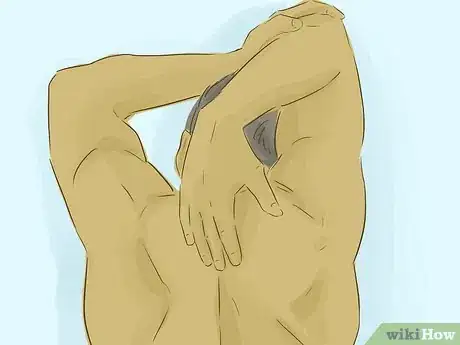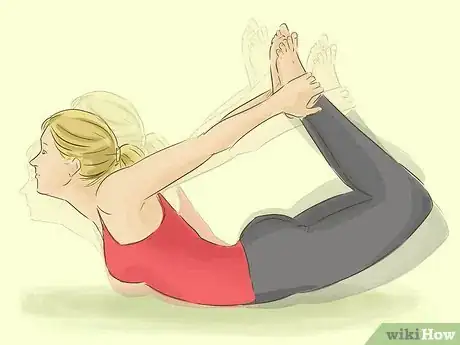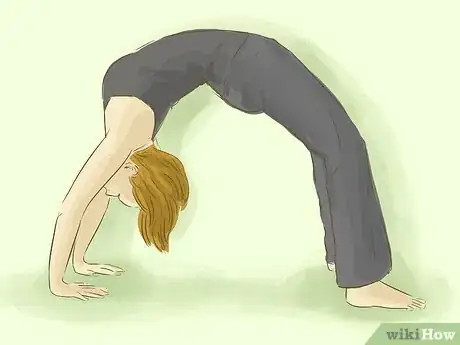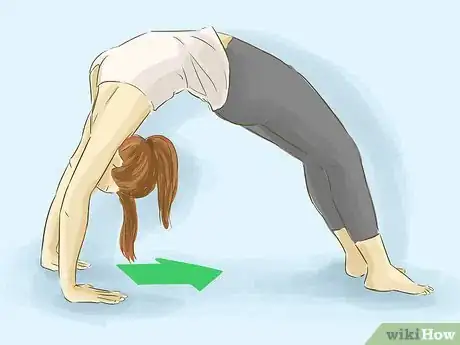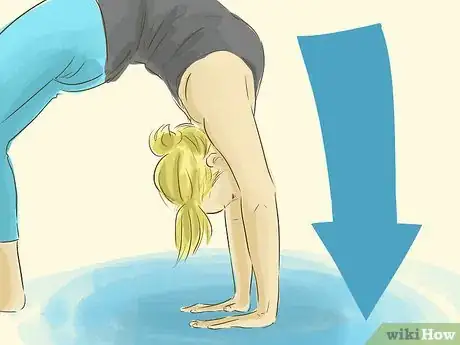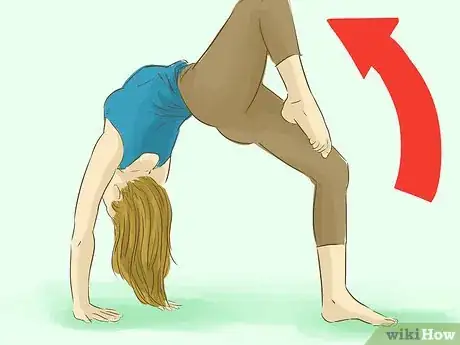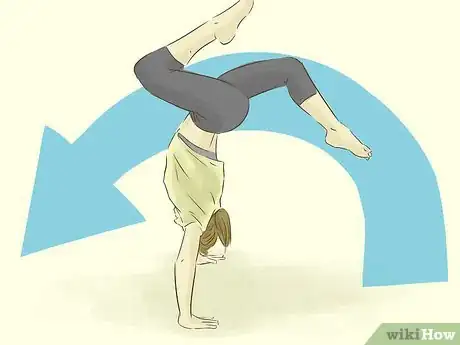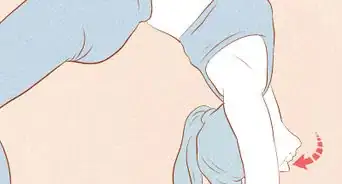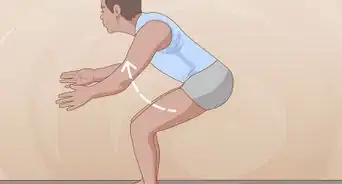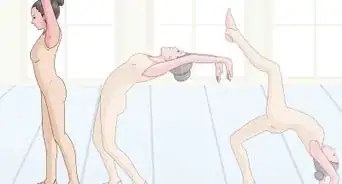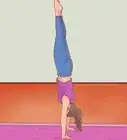This article was co-authored by Eric Christensen, DPT. Eric Christensen is a Physical Therapist based in Chandler, Arizona. With over a decade of experience, Eric works in both orthopedic and neurological fields and specializes in custom orthotic prescription and casting, vestibular reprogramming, and manual therapy. He holds a Bachelor’s degree in Exercise Science with a focus in Sports Medicine from Colorado State University and a Doctor of Physical Therapy from Regis University. In practice, Eric takes a developmental approach to rehabilitation utilizing the Selective Functional Movement Assessment. He uses functional movement patterning and manual therapy to return patients to prior levels of function.
wikiHow marks an article as reader-approved once it receives enough positive feedback. In this case, several readers have written to tell us that this article was helpful to them, earning it our reader-approved status.
This article has been viewed 106,175 times.
A bridge kick-over is a type of back bend performed in gymnastics and cheerleading. It involves getting into a back bend and then using momentum to kick your legs over your body and land on your feet. This can been challenging for a beginner gymnast, but this article addresses ways for you to prepare for this move and perform it. Have fun practicing and remember to always have a spotter when doing gymnastics.
Steps
Warming up
-
1Do simple stretches. It is never a good idea to do a back bend or bridge like pose without properly stretching and warming up first.
- Make sure you stretch your arms, neck, shoulders, back, hips and legs.
- Hold each stretch for at least 15 to 20 seconds.
- Don't overstretch. You can injure yourself by pushing a stretch too far.
-
2Perform a Cobra. This is a position in yoga where you bend your back from lying face down on the mat.
- Lie face-down in the "prone position" with your hands underneath your shoulders (so your thumbs are directly beneath your armpits).
- Press the upper half of your body off the floor, pushing down with your arms. Your legs and hips should stay on the ground.
- Take the stretch as far as you can go. Don't try to excessively push yourself, which can lead to lower back pain.
- A common problem for beginners is not being able to extend the arms the whole way. The only way to be able to gain enough flexibility to do this is to practice this position and regular stretching.
Advertisement -
3Perform a see-saw move. This will gently stretch your back. It can be difficult to get into this position, but it will get better with practice.
- Lay on your stomach with your arms and legs straight.
- Reach your arms past your sides and towards your feet.
- Bend your legs at the knee and grab your ankles with your hands.
- Lift your upper and lower body off of the mat and rock back and forth gently.
- This can be very hard for people who are not flexible. If you are having trouble getting into the position, try some stretching exercises or yoga to improve flexibility.
Doing a Bridge Kick-over
-
1Go into a bridge. You can do this from standing or from the ground.
- Lay on the ground with your knees bent at a 90 degree angle. Your feet should be planted firmly on the mat.
- Place your hands by your feet at your ears with your fingers pointing at your feet. Your elbows should point up towards the ceiling.
- Push your back off of the mat with your feet and hands planted firmly on the mat. You are in a complete bridge backbend when your arms and legs are straight.
- You might not be able to get into a bridge backbend completely at first, but this will improve with practice.
- A common problem for people who can't seem to master a bridge backbend is the position of the feet. Often times they are too far forward for proper leverage. Make sure your feet are directly underneath your knees as you push your back off of the mat.
- Also check the position of your hands to make sure they aren't too far away from your head.
- You can also lower yourself into the same position from a standing backbend. Doing this from a standing backbend will give you more momentum for your kick-over.
-
2Walk your hands close to your feet. This will help you to get enough leverage for the kick-over.
- Make sure your back is bent and not sagging down towards the floor.
- Don't overextend your back in this position to avoid injury.
- Don't stiffen your neck to avoid strain.
-
3Shift your weight forward. You will need to have your weight shifted forward to have the momentum to do the kick-over.
- Make sure your body is in the correct bridge backbend position before you kickover.
- Correct your posture and hand position if needed.
- Have your spotter check to make sure there aren't any people or objects in your way before you proceed.
-
4Kick with your good leg. Remember to push forward.
- This can be the most challenging part of the backbend because you have to have enough flexibility and momentum to get your leg over your body as it is in a back bend.
- A common problem as that the weight is not shifted forward enough to provide momentum for the kick-over. If you can't complete the move, then try to shift your weight forwards more and push off the ground firmly.
-
5Use modifications if you are having trouble. A common problem for beginners is they don't have enough strength or flexibility to complete the kick-over part of this move.
- To help fix this, use the wall to help you practice the kick-over.
- Get into a bridge with your feet by a wall and use it to walk your feet upwards and push off. This will give you the momentum to complete the full kick-over.
- You can also use a wedged mat for leverage if you are having the problem of not being able to complete your kick-over.
- Stand on the thick side of the mat and perform your backbend. The thick side gives you extra height and makes the kick-over easier.
- Use these modifications until you've mastered the kick-over. Then try again without them.
Community Q&A
-
QuestionWhat if you are afraid to kick over out of the bridge?
 Community AnswerHave someone spot you so they can catch you if you start to fall in an awkward position. It's really all about trusting that you can do it. Moves like these take practice, so don't be disappointed if you don't get it on the first try.
Community AnswerHave someone spot you so they can catch you if you start to fall in an awkward position. It's really all about trusting that you can do it. Moves like these take practice, so don't be disappointed if you don't get it on the first try. -
QuestionHow do you put weight on your hands?
 Community AnswerYou have to straighten your legs and make sure that your shoulders are aligned with your hands.
Community AnswerYou have to straighten your legs and make sure that your shoulders are aligned with your hands. -
QuestionWhat will happen if I fall?
 Community AnswerMost likely nothing. You will feel a little stunned for a moment, maybe a little pain. Just take a rest and try again. Always use a spotter while you are learning.
Community AnswerMost likely nothing. You will feel a little stunned for a moment, maybe a little pain. Just take a rest and try again. Always use a spotter while you are learning.
Warnings
- Stretch out your wrists and your back first.⧼thumbs_response⧽
- Don't let small children attempt this without help.⧼thumbs_response⧽
